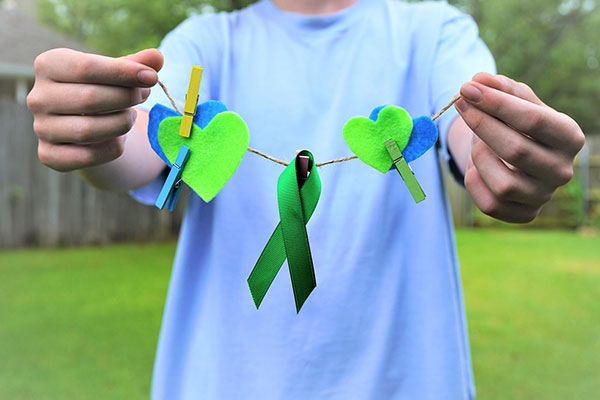Non-Hodgkin Lymphomas in Children
What Is Non-Hodgkin Lymphoma?
Non-Hodgkin lymphoma (lim-FOE-muh) is a type of cancer that develops in the white blood cells of the lymphatic system. The lymphatic system is a part of the immune system and works to remove bacteria, viruses, and other harmful substances from the body.
The lymphatic system includes:
- the lymph nodes or lymph glands
- the thymus gland
- the spleen
- the tonsils
- the adenoids
- the bone marrow
- and the tubes (lymphatics or lymph vessels) that connect the parts of the lymphatic system
In Hodgkin lymphoma, the tumors usually have large cancer cells called Reed-Sternberg cells. Lymphomas without these cells are called non-Hodgkin lymphomas.
Signs and Symptoms of Non-Hodgkin Lymphoma?
Signs and symptoms of non-Hodgkin lymphoma depend on what part of the body is affected. Some children may say they have stomach pain, are constipated, or have a decreased appetite. Other children may have trouble breathing or swallowing, coughing or wheezing, or chest pain.
Symptoms of non-Hodgkin lymphoma may include:
- swollen lymph nodes in the neck, armpit, or groin
- fever, chills, or night sweats
- itchy skin
- weight loss
- tiredness
What Causes Non-Hodgkin Lymphoma?
This type of cancer usually is caused by a change in the genes of growing white blood cells. Doctors aren’t sure why this happens.
Non-Hodgkin lymphoma is more common in kids who have:
- immune system problems
- HIV infection
- been given immunosuppressive drugs after organ transplants
- been treated with radiation therapy or chemotherapy for other types of cancer
- have had Epstein-Barr viral infection (mononucleosis)
How Is Non-Hodgkin Lymphoma Diagnosed?
Doctors look for swollen lymph nodes, breathing problems, or swelling in the belly, face, hands, or feet.
When a child has an enlarged lymph node with no known cause, the doctor will watch the node closely, noting any change in size. If remains enlarged or grows, a biopsy is necessary.
A needle aspiration biopsy may be taken in the office under local anesthesia or surgically in the operating room.
If lymphoma is confirmed, additional tests can tell if it has spread (metastasized) and the type of lymphoma.
These tests may include:
- blood tests, including checking the number of blood cells and how well the kidneys and liver are working
- imaging tests like ultrasound, computed tomography (CT), magnetic resonance imaging (MRI), and X-rays
- biopsy or aspiration of the bone marrow
- imaging tests like ultrasound, computed tomography (CT), magnetic resonance imaging (MRI), and X-rays
- bone scan and/or positron emission tomography (PET) scan (when radioactive material is put into the bloodstream to look for cancer cells throughout the body)
Non-Hodgkin Lymphoma Treatment
A pediatric oncologist (a doctor specializing in childhood cancer) works with your doctor or Pediatric ENT to treat the non-Hodgkin lymphoma.
Staging treatment is a way to see if the disease has spread. This information helps the care team choose the best treatments.
Treatments for non-Hodgkin lymphoma may include:
- chemotherapy (chemo): medicines that kill cancer cells and stop their growth
- radiation therapy: high-energy X-rays that kill cancer cells
- targeted therapy: specific drugs that find and attack cancer cells without hurting normal cells
- immunotherapy: medicine that uses the child’s immune system to get rid of cancer cells
- stem cell transplants: healthy stem cells are put into the body
- surgery: sometimes, surgery can remove part of the tumor
- enrollment in a clinical trial: tests of new cancer treatments or comparing them with current treatments. Many clinical trials focus on reducing the side effects of current therapies.
After treatment, anyone who has had non-Hodgkin lymphoma should have regular checkups throughout their life to make sure the lymphoma hasn’t come back.


